Llc Resonant Converter
TANINO; Kohei ; et al.
U.S. patent application number 15/892369 was filed with the patent office on 2019-02-28 for llc resonant converter. This patent application is currently assigned to OMRON Corporation. The applicant listed for this patent is OMRON Corporation. Invention is credited to Masaaki NAGANO, Shingo NAGAOKA, Hiroyuki ONISHI, Mitsuru SATO, Kohei TANINO.
| Application Number | 20190068065 15/892369 |
| Document ID | / |
| Family ID | 61189381 |
| Filed Date | 2019-02-28 |
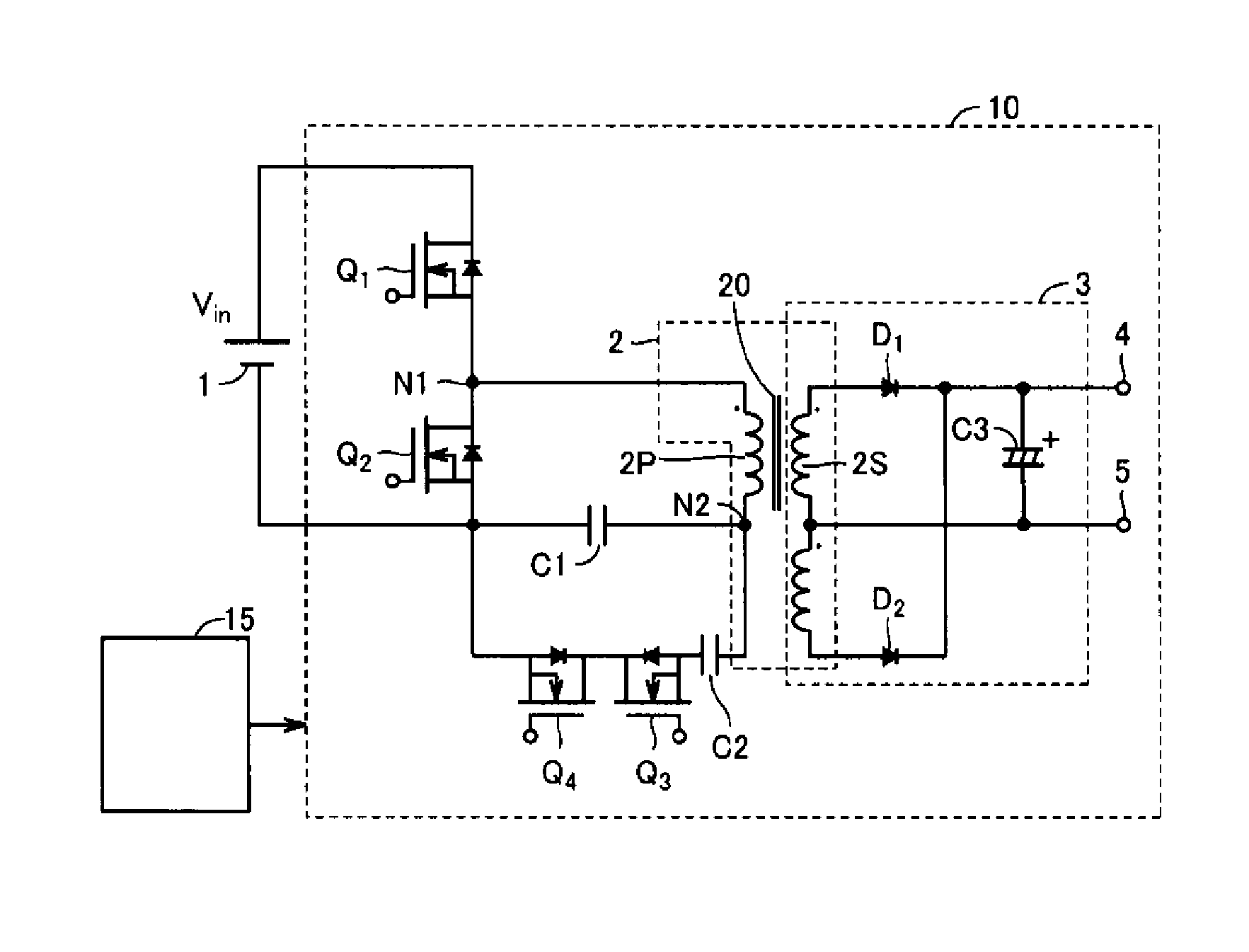

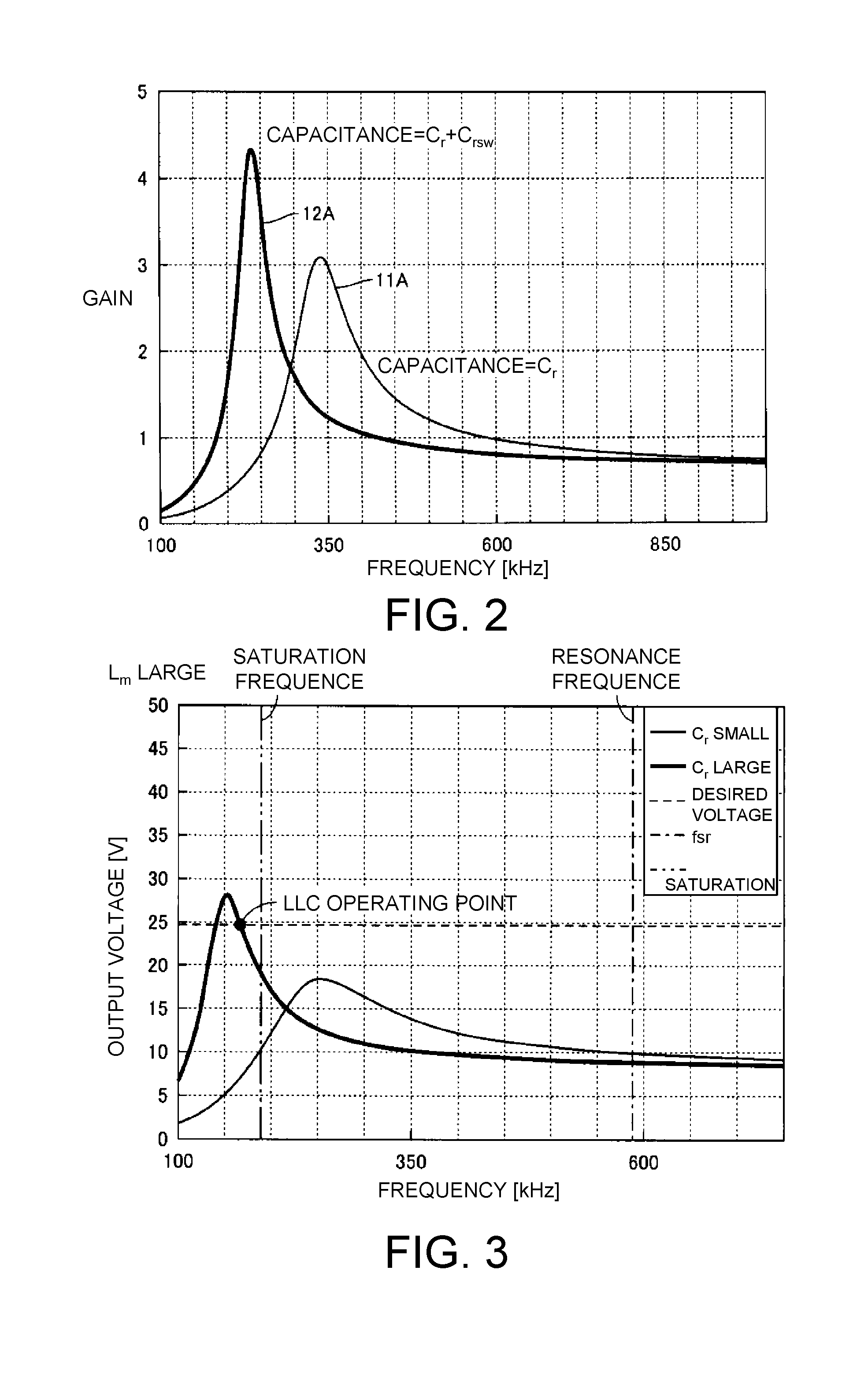
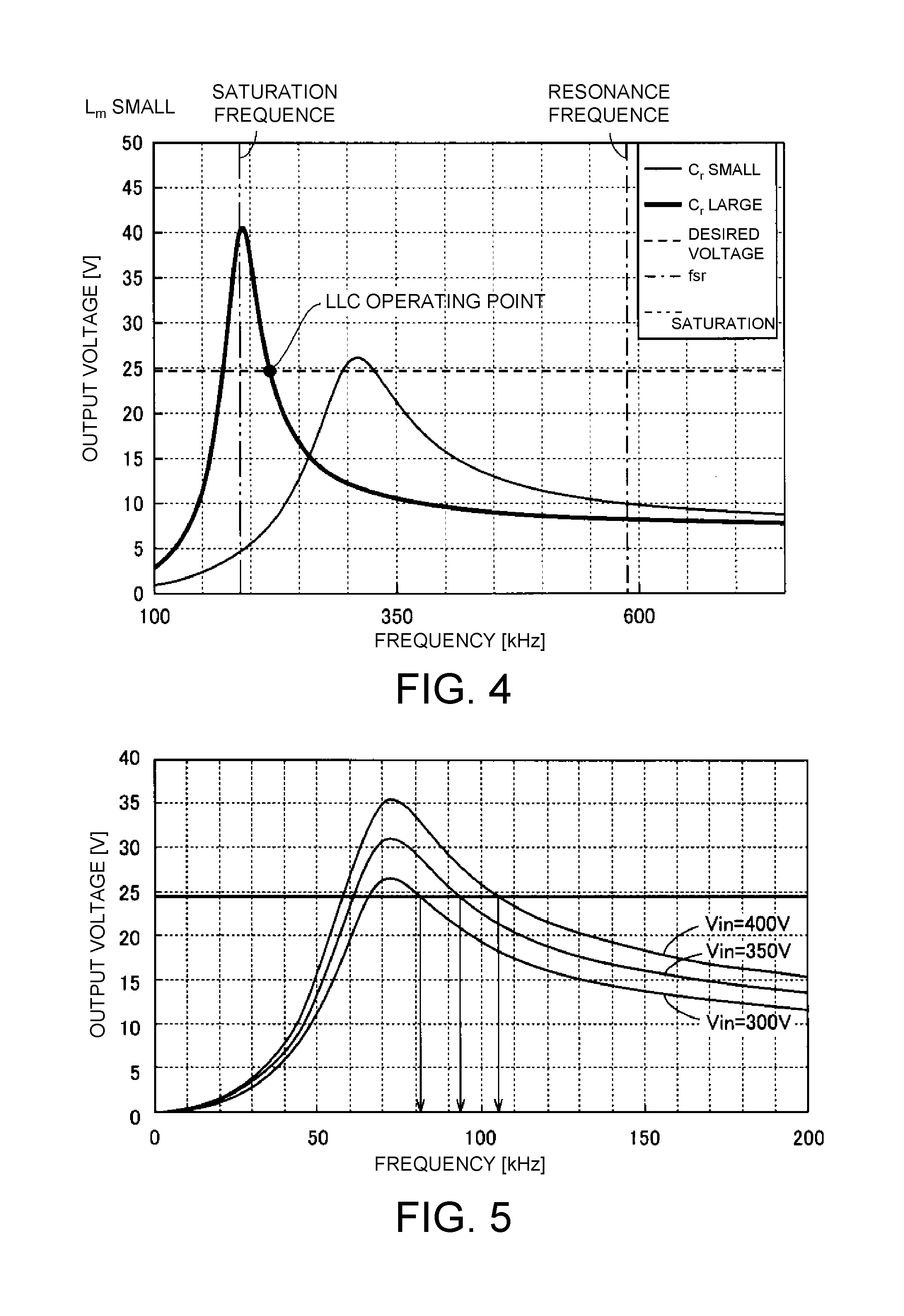
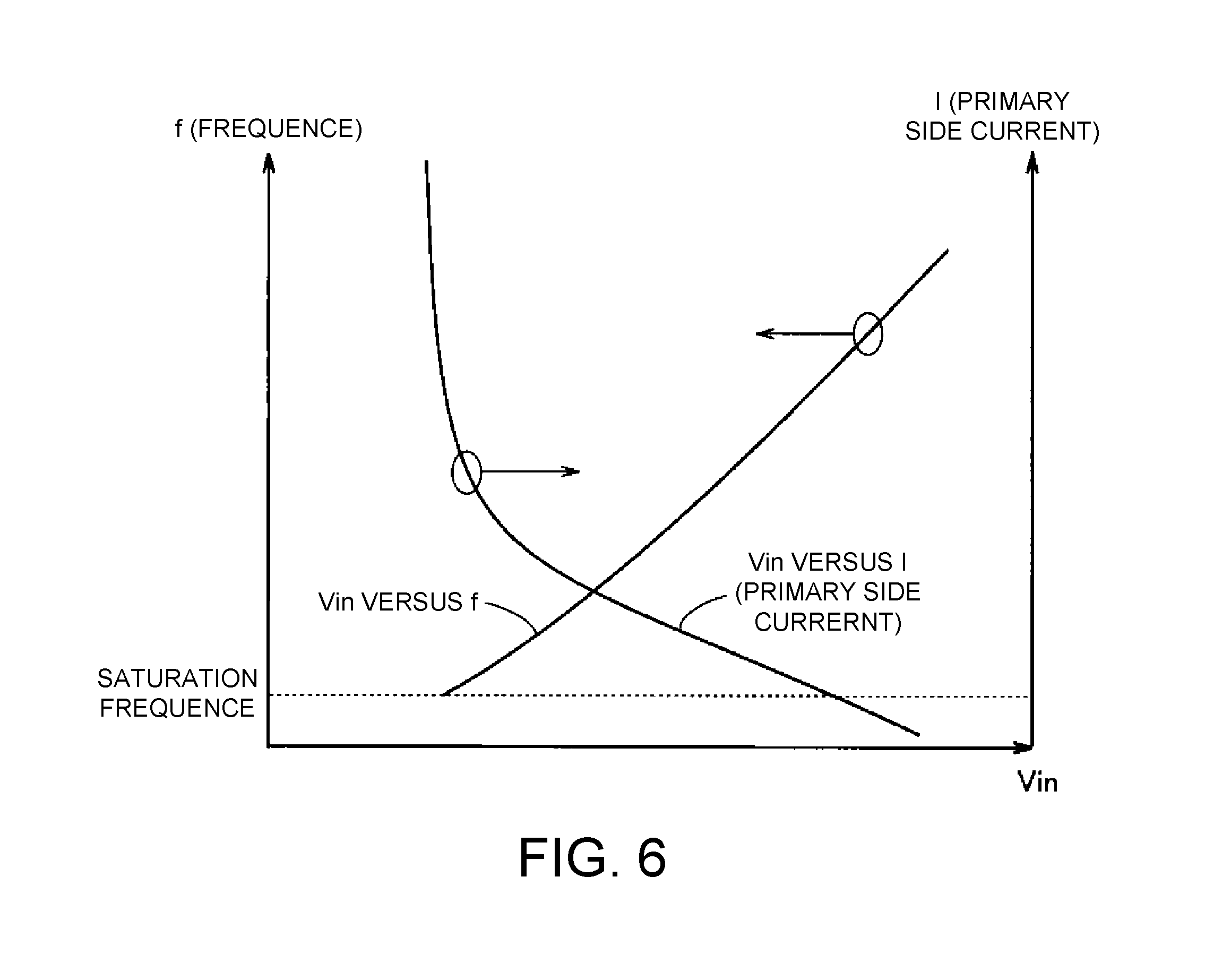
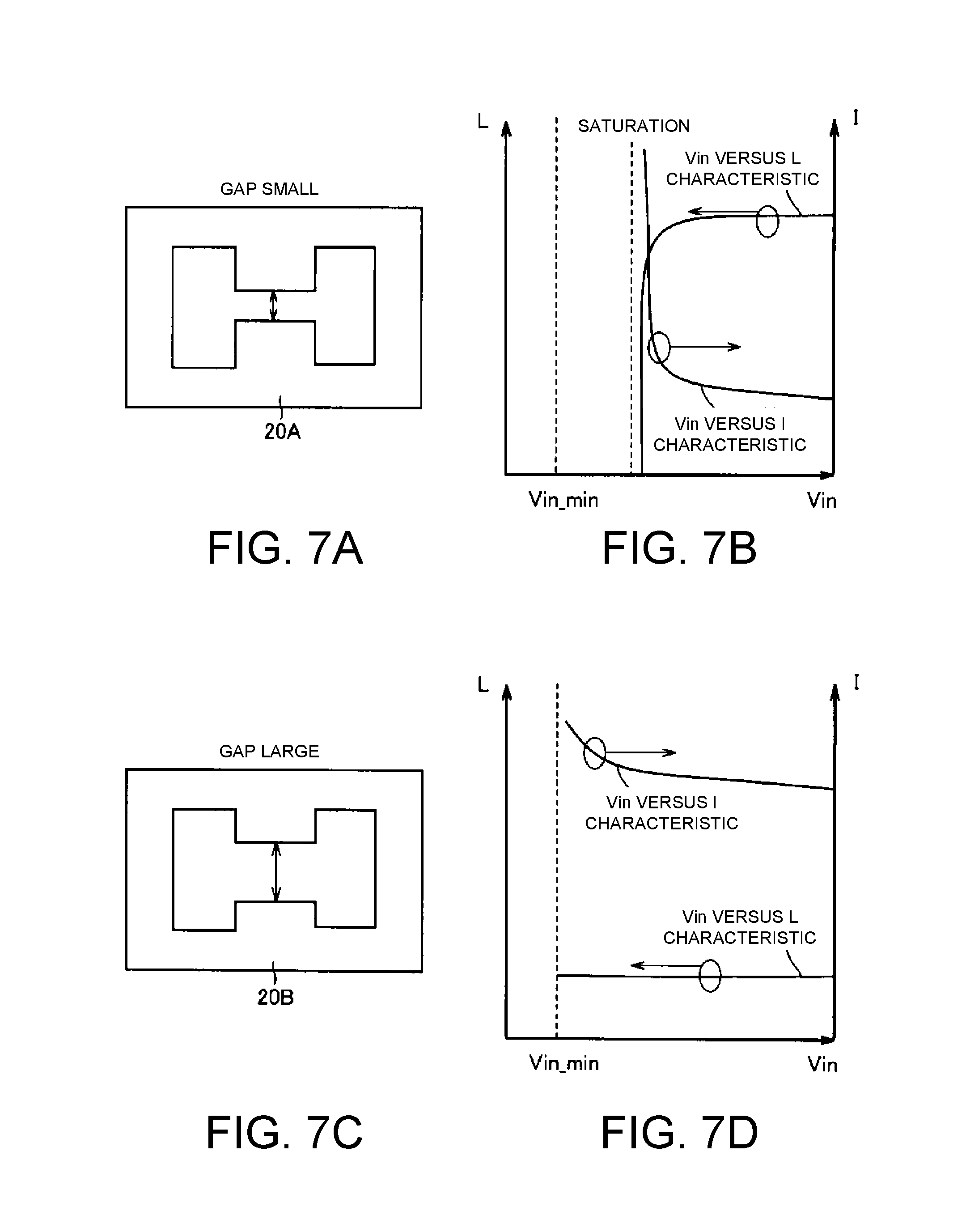
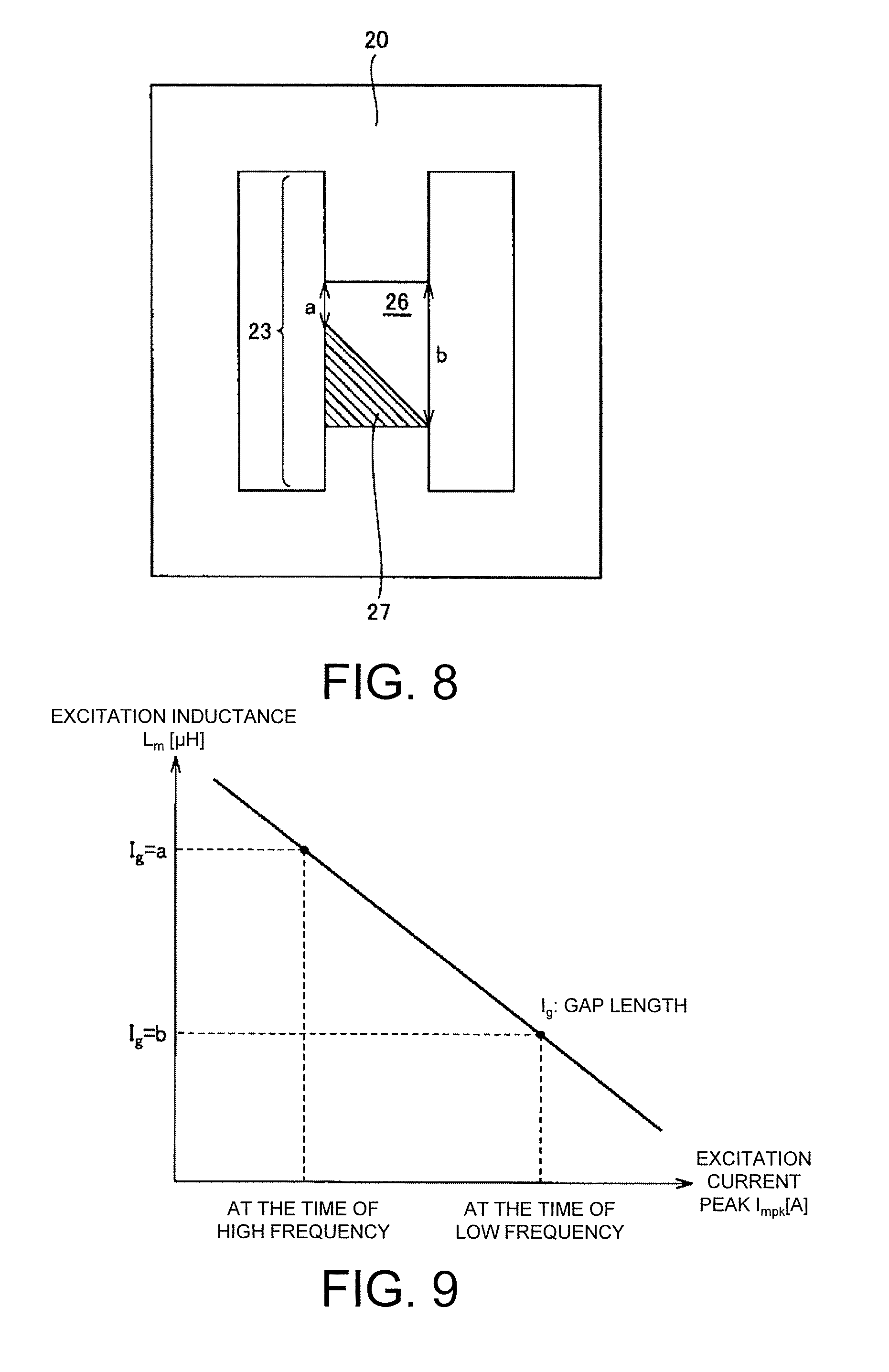
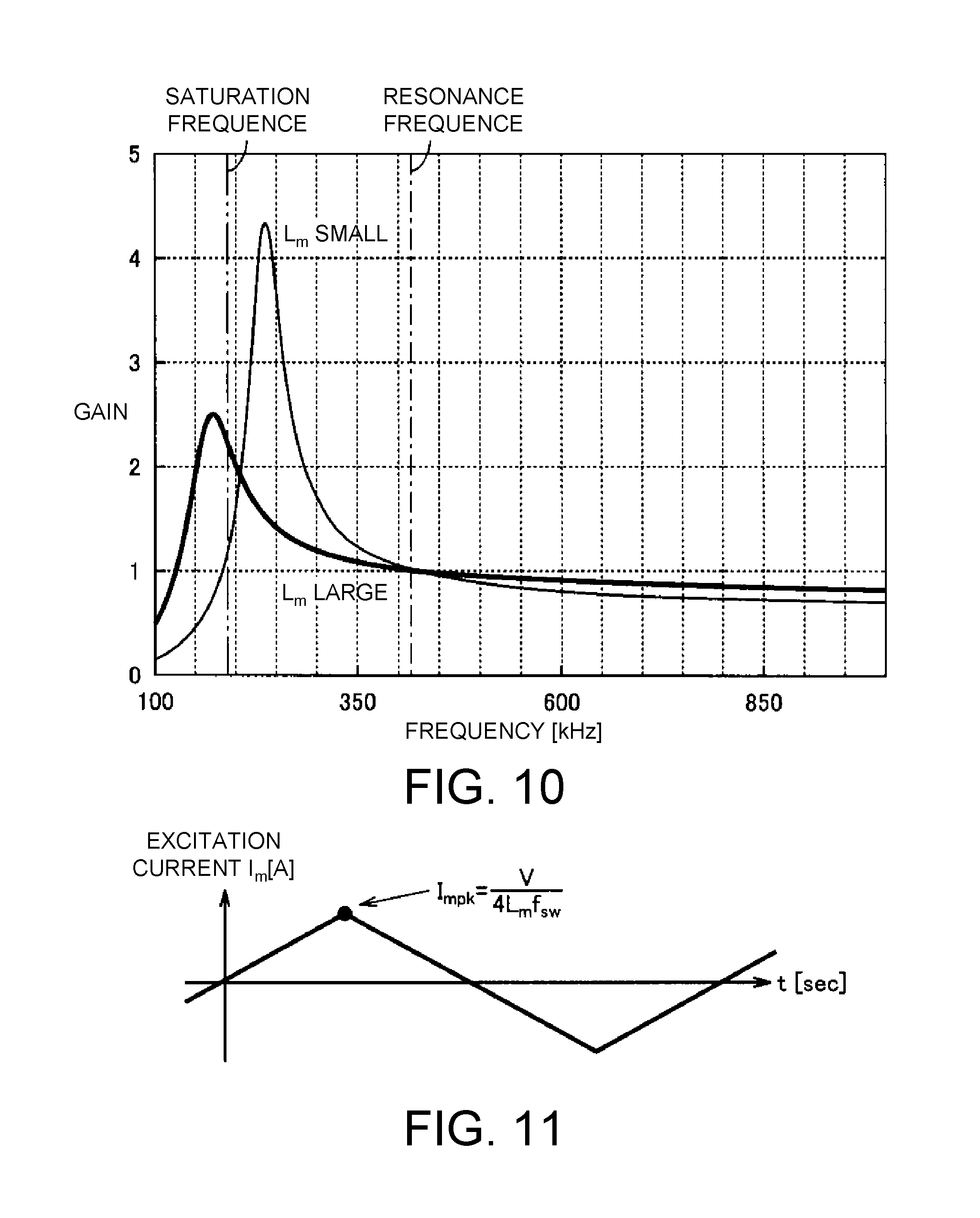
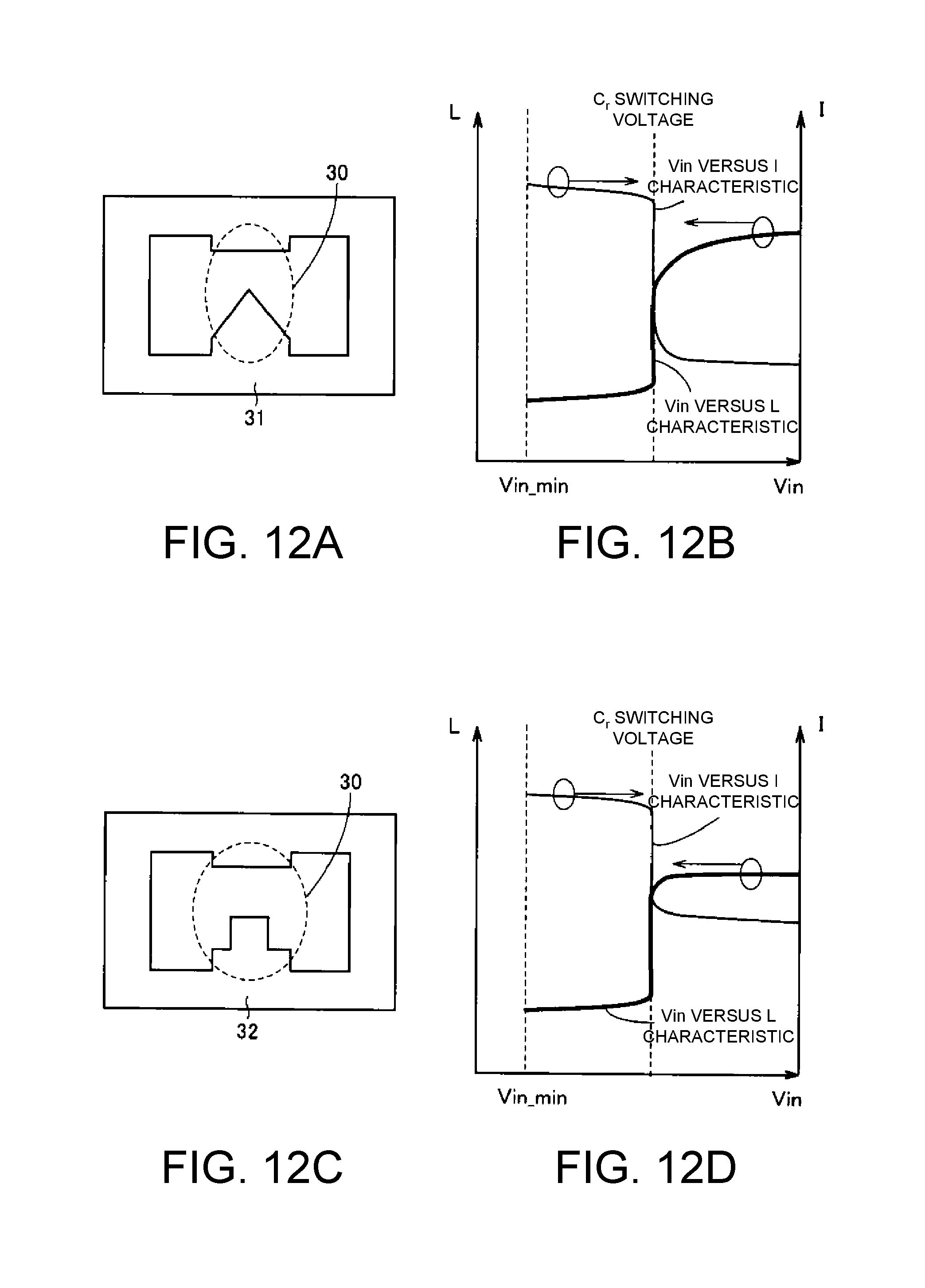
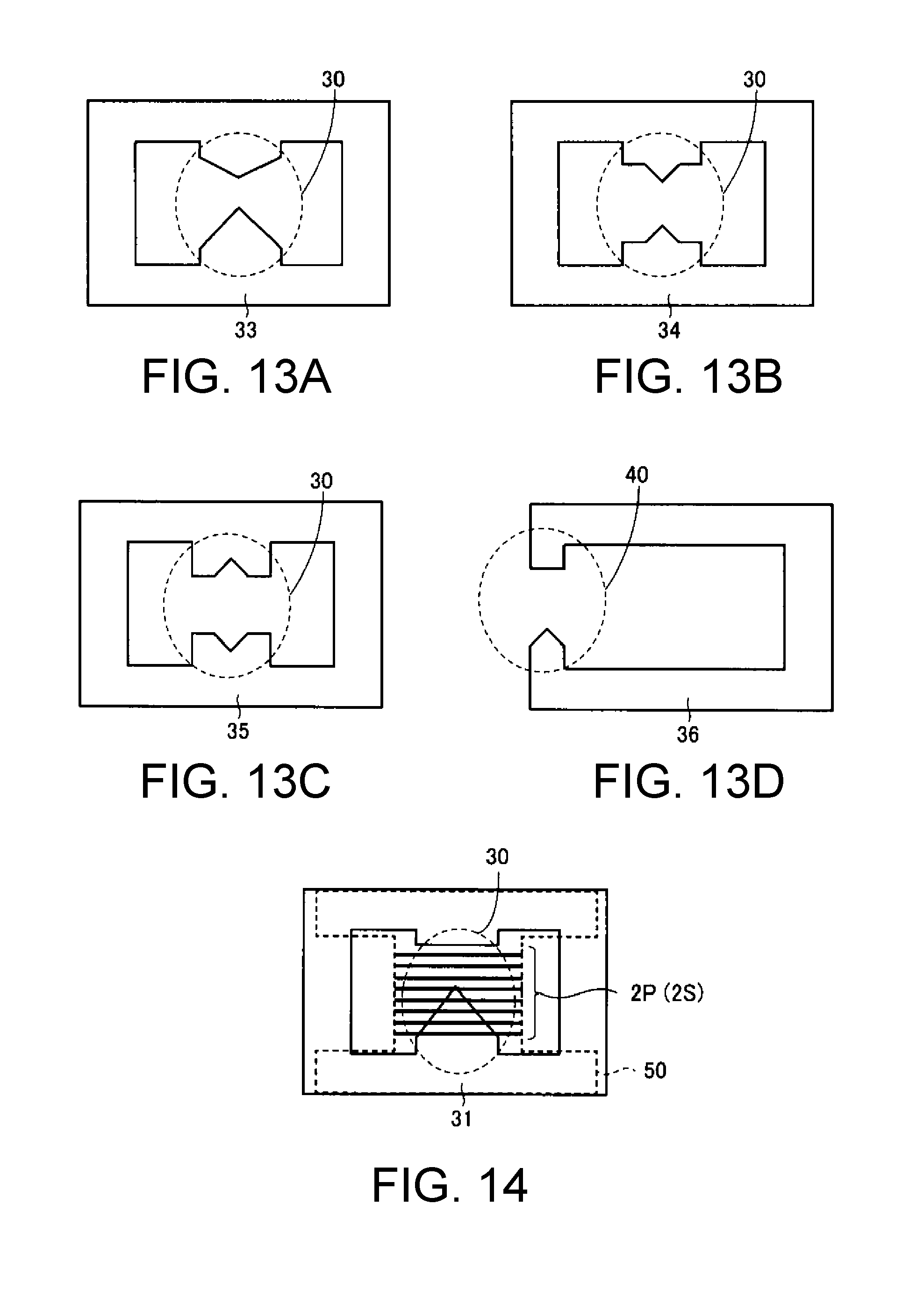


View All Diagrams
| United States Patent Application | 20190068065 |
| Kind Code | A1 |
| TANINO; Kohei ; et al. | February 28, 2019 |
LLC RESONANT CONVERTER
Abstract
Provided is an LLC resonant converter capable of achieving high efficiency while preventing saturation of a transformer. The LLC resonant converter includes semiconductor switches connected in series between a positive electrode and a negative electrode of a power source, a transformer including a primary winding, a core, and a secondary winding, a capacitor connected between the negative electrode of the power source and a second end of the primary winding of the transformer, a capacitor, and semiconductor switches connected to each other in series and in parallel with the capacitor, and a secondary side circuit connected to the secondary winding of the transformer, wherein the transformer is a swing choke coil.
| Inventors: | TANINO; Kohei; (Moriyama-shi, JP) ; NAGAOKA; Shingo; (Kizugawa-shi, KYOTO, JP) ; SATO; Mitsuru; (Nara-shi, JP) ; NAGANO; Masaaki; (Kusatsu-shi, JP) ; ONISHI; Hiroyuki; (Kyoto-shi, JP) | ||||||||||
| Applicant: |
|
||||||||||
|---|---|---|---|---|---|---|---|---|---|---|---|
| Assignee: | OMRON Corporation KYOTO JP |
||||||||||
| Family ID: | 61189381 | ||||||||||
| Appl. No.: | 15/892369 | ||||||||||
| Filed: | February 8, 2018 |
| Current U.S. Class: | 1/1 |
| Current CPC Class: | H02M 2007/4818 20130101; H01F 3/14 20130101; H02M 3/335 20130101; H02M 3/33569 20130101; H02M 2001/0058 20130101; H02M 1/40 20130101 |
| International Class: | H02M 3/335 20060101 H02M003/335; H02M 1/40 20060101 H02M001/40 |
Foreign Application Data
| Date | Code | Application Number |
|---|---|---|
| Aug 28, 2017 | JP | 2017-163271 |
Claims
1. An LLC resonant converter, comprising: a first switch and a second switch connected in series between a positive electrode and a negative electrode of a power source, a transformer including a primary winding having a first end connected to the first switch and the second switch, a core, and a secondary winding, a first capacitor connected between the negative electrode of the power source and a second end of the primary winding of the transformer, a second capacitor and a capacitance switch connected to each other in series and in parallel with the first capacitor, and a secondary side circuit connected to the secondary winding of the transformer, wherein the secondary side circuit comprises a plurality of diodes and a third capacitor, wherein the transformer is a swing choke coil.
2. The LLC resonant converter according to claim 1, wherein a gap is provided in the core, and at least one of a pair of opposing magnetic legs with the gap provided therebetween has a cross-sectional area which continuously varies.
3. The LLC resonant converter according to claim 1, wherein a gap is provided in the core, and at least one of a pair of opposing magnetic legs with the gap provided therebetween has a cross-sectional area which varies stepwise.
4. The LLC resonant converter according to claim 1, wherein ON and OFF of the capacitance switch is determined on the basis of an input voltage of the LLC resonant converter or a terminal voltage of a control circuit controlling the capacitance switch.
5. The LLC resonant converter according to claim 2, wherein ON and OFF of the capacitance switch is determined on the basis of an input voltage of the LLC resonant converter or a terminal voltage of a control circuit controlling the capacitance switch.
6. The LLC resonant converter according to claim 3, wherein ON and OFF of the capacitance switch is determined on the basis of an input voltage of the LLC resonant converter or a terminal voltage of a control circuit controlling the capacitance switch.
Description
CROSS-REFERENCE TO RELATED APPLICATION
[0001] This application claims the priority of Japan patent application serial no. 2017-163271, filed on Aug. 28, 2017. The entirety of the above-mentioned patent application is hereby incorporated by reference herein and made a part of this specification.
BACKGROUND
Technical Field
[0002] The present disclosure relates to an LLC resonant converter.
Description of Related Art
[0003] An LLC resonant converter is a type of DC-DC converter using resonance due to two inductances L and one capacitance C. Techniques for changing a resonance frequency by varying a capacitance of the LLC resonant converter have been proposed so far. For example, Published Japanese Translation No. 2009-514495 of PCT International Publication (Patent Document 1) discloses a power converter including a capacitor circuit connected in series to an inductor and a switch for changing a capacitance value of the capacitor circuit. The capacitor circuit has two capacitors connected in parallel to the inductor. The switch is connected in series to one of the two capacitors. For example, Japanese Unexamined Patent Publication Application No. 2014-3764 (Patent Document 2) discloses a power conversion device having a switch for short-circuiting both ends of a capacitor.
[0004] When an excitation inductance of a transformer is large, saturation of the transformer is likely to occur after a capacitance of a resonant circuit is switched. When the saturation of the transformer occurs, an LLC resonant converter cannot be normally controlled, and an output voltage cannot be output to a secondary side. To prevent the saturation of the transformer, it is conceivable to use a transformer with a small excitation inductance relative to the LLC resonant converter. However, when the excitation inductance of the transformer is small, there is a problem in that efficiency of the LLC resonant converter decreases when the capacitance of the resonant circuit is switched to a small value.
[0005] [Patent Document 1] Published Japanese Translation No. 2009-514495 of PCT International Publication
[0006] [Patent Document 2] Japanese Laid-open No. 2014-3764
SUMMARY
[0007] An LLC resonant converter according to one aspect of the present disclosure includes a first switch and a second switch connected in series between a positive electrode and a negative electrode of a power source, a transformer including a primary winding having a first end connected to the first switch and the second switch, a core, and a secondary winding, a first capacitor connected between the negative electrode of the power source and a second end of the primary winding of the transformer, a second capacitor and a capacitance switch connected to each other in series and in parallel with the first capacitor, and a secondary side circuit connected to the secondary winding of the transformer, wherein the transformer is a swing choke coil.
BRIEF DESCRIPTION OF THE DRAWINGS
[0008] FIGS. 1A and 1B are circuit diagrams of an LLC resonant converter according to one embodiment of the present disclosure.
[0009] FIG. 2 is a diagram illustrating an example of a frequency versus gain characteristic of the LLC resonant converter illustrated in FIGS. 1A and 1B.
[0010] FIG. 3 is a diagram illustrating a problem which occurs due to switching a capacitance of a resonant circuit when an excitation inductance of a transformer is large.
[0011] FIG. 4 is diagram illustrating a problem which occurs due to switching the capacitance of the resonant circuit when the excitation inductance of the transformer is small.
[0012] FIG. 5 is a diagram illustrating an example of a frequency versus output voltage characteristic of a general LLC resonant converter.
[0013] FIG. 6 is a diagram schematically illustrating an input voltage versus primary side current characteristic and an input voltage versus frequency characteristic in the general LLC resonant converter.
[0014] FIGS. 7A, 7B, 7C and 7D are diagrams illustrating a relationship between a shape of a core of a transformer used for the general LLC resonant converter and characteristics of the LLC resonant converter.
[0015] FIG. 8 is a schematic diagram illustrating an operation principle of a swing choke coil used in the LLC resonant converter according to the embodiment of the present disclosure.
[0016] FIG. 9 is a diagram illustrating an example of characteristics of the swing choke coil illustrated in FIG. 8.
[0017] FIG. 10 is a gain curve illustrating characteristics of the LLC resonant converter according to the embodiment of the present disclosure.
[0018] FIG. 11 is a diagram illustrating a temporal change in an excitation current.
[0019] FIGS. 12A, 12B, 12C and 12D are diagrams illustrating a relationship between a shape of a core of a transformer and the characteristics of the LLC resonant converter.
[0020] FIGS. 13A, 13B, 13C and 13D are diagrams illustrating an example of a shape of a core applied to the embodiment of the present disclosure.
[0021] FIG. 14 is a diagram schematically illustrating a primary winding and a secondary winding wound around the core.
[0022] FIG. 15 is a diagram illustrating a relationship between a resonance frequency and an operation frequency.
DESCRIPTION OF THE EMBODIMENTS
[0023] An object of the present disclosure is to provide an LLC resonant converter capable of achieving high efficiency while preventing saturation of a transformer.
[0024] An LLC resonant converter according to one aspect of the present disclosure includes a first switch and a second switch connected in series between a positive electrode and a negative electrode of a power source, a transformer including a primary winding having a first end connected to the first switch and the second switch, a core, and a secondary winding, a first capacitor connected between the negative electrode of the power source and a second end of the primary winding of the transformer, a second capacitor and a capacitance switch connected to each other in series and in parallel with the first capacitor, and a secondary side circuit connected to the secondary winding of the transformer, wherein the transformer is a swing choke coil.
[0025] According to an embodiment of the disclosure, a gap may be provided in the core, and at least one of a pair of opposing magnetic legs with the gap provided therebetween may have a cross-sectional area which continuously varies.
[0026] According to an embodiment of the disclosure, a gap may be provided in the core, and at least one of a pair of opposing magnetic legs with the gap provided therebetween may have a cross-sectional area which varies stepwise.
[0027] According to an embodiment of the disclosure, ON and OFF of the capacitance switch may be determined on the basis of an input voltage of the LLC resonant converter or a terminal voltage of a control circuit controlling a third switch and a fourth switch.
[0028] According to the present disclosure, it is possible to provide an LLC resonant converter which is capable of achieving high efficiency while preventing saturation of a transformer.
[0029] Embodiments of the present disclosure will be described in detail with reference to the drawings. Also, in the drawings, the same or corresponding parts will be designated by the same reference numerals, and the description thereof will not be repeated.
[0030] FIGS. 1A and 1B are circuit diagrams of an LLC resonant converter according to one embodiment of the present disclosure. FIG. 1A is a circuit diagram illustrating a configuration of the LLC resonant converter, and FIG. 1B is an equivalent circuit diagram illustrating a transformer illustrated in FIG. 1A by an equivalent circuit. An LLC resonant converter 10 includes, for example, semiconductor switches Q1, Q2, Q3, and Q4, which are metal oxide semiconductor field effect transistors (MOSFETs), a transformer 2, capacitors C1 and C2, a secondary side circuit 3, and output terminals 4 and 5. As illustrated in FIG. 1B, a primary winding 2P of the transformer 2 is equivalently expressed by an inductor L1 having a leakage inductance Lr, an inductor L2 having an excitation inductance L.sub.m, and a resistor. The inductor L1 may be separately prepared outside the transformer.
[0031] In FIG. 1B, the inductor L1 is indicated as an inductor connected between a connection point N1 and a connection point N3, and the inductor L2 is indicated as an inductor connected between a connection point N2 and the connection point N3. A resistance component is connected in parallel with the inductor L2 between the connection point N2 and the connection point N3.
[0032] The semiconductor switches Q1 and Q2 are connected in series between a positive electrode and a negative electrode of a power source 1 to form a half bridge circuit. The power source 1 is a DC power source which outputs a DC voltage V.sub.in.
[0033] The transformer 2 has the primary winding 2P, a secondary winding 2S, and a core 20. A first end of the primary winding 2P is connected to the connection point N1, which is a connection point between the semiconductor switch Q1 and the semiconductor switch Q2. A second end of the primary winding 2P is connected to the connection point N2.
[0034] The capacitor C1 has a capacitance C.sub.r and is connected between the second end of the primary winding 2P of the transformer 2 and the negative electrode of the power source 1. That is, the capacitor C1 is connected between the connection point N2 and the negative electrode of the power source 1.
[0035] The capacitor C2 has a capacitance C.sub.rsw. The capacitor C2, the semiconductor switch Q3, and the semiconductor switch Q4 are connected in series between the connection point N2 and the negative electrode of the power source 1, and in parallel with the capacitor C1. In the configuration illustrated in FIGS. 1A and 1B, a first end of the capacitor C2 is connected in parallel with the capacitor C1 to the second end of the primary winding 2P of the transformer 2. The semiconductor switch Q3 and the semiconductor switch Q4, which are capacitance switches, are connected in series between a second end of the capacitor C2 and the negative electrode of the power source 1. However, the capacitor C2 and the semiconductor switches Q3 and Q4 are not limited to being connected in the above-described order.
[0036] The secondary side circuit 3 is connected to the secondary winding 2S of the transformer 2. The secondary side circuit 3 includes diodes D1 and D2 and a capacitor C3. The capacitor C3 is, for example, an electrolytic capacitor.
[0037] In the LLC resonant converter 10, a resonant circuit is configured with the leakage inductance L.sub.r, the excitation inductance L.sub.m and a capacitance. The capacitance of the resonant circuit is changed by turning on and off the semiconductor switches Q3 and Q4. Therefore, the resonance frequency changes. Specifically, when the semiconductor switches Q3 and Q4 are turned off, the resonant circuit 11 is configured with the leakage inductance L.sub.r, the excitation inductance L.sub.m, and the capacitance C.sub.r. On the other hand, when the semiconductor switches Q3 and Q4 are turned on, the resonant circuit 11 is configured with the leakage inductance L.sub.r, the excitation inductance L.sub.m, and a capacitance (C.sub.r+C.sub.rsw). The turning on and off of the semiconductor switches Q3 and Q4 are controlled by a control signal from, for example, a control IC 15 (however, the present disclosure is not limited to the control IC 15). Further, The turning on and off of the semiconductor switches Q3 and Q4 are determined from a result of sensing an input voltage or each terminal voltage of the control IC 15 or the like. When the input voltage is low, the semiconductor switches Q3 and Q4 are turned on.
[0038] FIG. 2 is a diagram illustrating an example of a frequency versus gain characteristic of the LLC resonant converter 10 illustrated in FIGS. 1A and 1B. Referring to FIGS. 1A, 1B and 2, a curve 11A is a gain curve of the LLC resonant converter 10 due to the resonant circuit 11 (capacitance=C.sub.r), and a curve 12A is a gain curve of the LLC resonant converter 10 due to the resonant circuit 12 (capacitance=(C.sub.r+C.sub.rsw)). The gain can be increased by switching the capacitance of the resonant circuit from C.sub.r to C.sub.r+C.sub.rsw. Accordingly, it is possible to ensure a desired output voltage even when the input voltage (V.sub.in) decreases. Also, since a design requirement in consideration of the low input voltage is relaxed, it is possible to ensure high efficiency during a normal operation.
[0039] Further, according to the configuration illustrated in FIGS. 1A and 1B, since a high gain is obtained, an input capacitor (not illustrated in FIGS. 1A and 1B) can be miniaturized. In a DC-DC converter, a minimum value C.sub.inminn of a capacitance C.sub.in of an input capacitor required to satisfy a power source holding time t(ms) may be expressed by the following equation.
C i n min = 2 P V c _ stari 2 - V in _ min 2 .times. t .times. 10 - 3 [ Equation 1 ] ##EQU00001##
[0040] In the above Equation, P is the maximum output power of the DC-DC converter, V.sub.c.sub._.sub.--start is a charging voltage of the input capacitor when the power supply is stopped, V.sub.in.sub._.sub.min is a minimum input voltage at which the DC-DC converter can operate. Since the capacitance C.sub.in can be made smaller as the gain is increased, the input capacitor can be miniaturized.
[0041] Further, the core and the winding forming the transformer can be miniaturized by increasing a switching frequency. A maximum magnetic flux density .DELTA.B of the transformer can be expressed by the following equation. V.sub.tr is a (primary or secondary) voltage applied to the transformer, f.sub.sw is a frequency of the voltage applied to the transformer, N is the number of primary or secondary windings, and A.sub.e is an effective cross-sectional area of the core.
.DELTA. B = V tr 4 Nf sw A e [ Equation 2 ] ##EQU00002##
[0042] To reduce the maximum magnetic flux density .DELTA.B, the following methods can be considered.
[0043] i) Increase the number of windings N.
[0044] ii) Increase the effective cross-sectional area Ae of the core.
[0045] iii) Increase the frequency f.sub.sw.
[0046] However, when the number of windings N is increased or the effective cross-sectional area Ae of the core is increased, a size of the transformer increases. In this regard, by increasing the frequency f.sub.sw, the maximum magnetic flux density .DELTA.B can be reduced without changing a volume of the core and the number of windings. Therefore, it is possible to downsize the core and the winding forming the transformer by increasing the switching frequency.
[0047] When the resonance frequency in the LLC resonant converter is switched, the following problems may occur. FIG. 3 is a diagram illustrating a problem which occurs due to switching the capacitance of the resonant circuit when the excitation inductance L.sub.m of the transformer is large. Referring to FIG. 3, a "saturation frequency" corresponds to a switching frequency of the LLC resonant converter when the transformer 2 is saturated. An operating point of the LLC resonant converter for obtaining a desired output voltage is determined on the basis of a gain curve.
[0048] According to the gain curve illustrated in FIG. 3, it is necessary to increase the capacitance of the resonant circuit (i.e., to switch the capacitance from C.sub.r to C.sub.r+C.sub.rsw) to obtain the desired output voltage. However, the switching frequency of the operating point is smaller than the saturation frequency. That is, the transformer is saturated when the capacitance of the resonant circuit is increased to obtain the desired output voltage. Accordingly, the LLC resonant converter may not operate.
[0049] FIG. 4 is diagram illustrating a problem which occurs due to switching the capacitance of the resonant circuit when the excitation inductance L.sub.m of the transformer is small. Referring to FIG. 4, even if the capacitance of the resonant circuit is increased to obtain a desired output voltage, the switching frequency of the operating point is larger than the saturation frequency. Therefore, the saturation of the transformer can be prevented. However, since the excitation inductance L.sub.m is small, a large current flows through the LLC resonant converter. Accordingly, a problem in that efficiency of the LLC resonant converter is deteriorated occurs when the capacitance of the resonant circuit is a small value (C.sub.r).
[0050] This point will be explained in more detail. FIG. 5 is a diagram illustrating an example of a frequency versus output voltage characteristic of a general LLC resonant converter. As illustrated in FIG. 5, when an output voltage is constant, a frequency decreases as the input voltage V.sub.in of the LLC resonant converter decreases.
[0051] FIG. 6 is a diagram schematically illustrating an input voltage V.sub.in versus primary side current I characteristic and an input voltage V.sub.in versus frequency f characteristic in the general LLC resonant converter. As illustrated in FIG. 6, in the case in which an output voltage and a primary inductance of the LLC resonant converter are constant, when the input voltage V.sub.in decreases and a frequency f decreases, a primary side current I increases. When the frequency f reaches the saturation frequency, the excitation inductance becomes substantially 0, and thus the primary side current I is a maximum value.
[0052] FIGS. 7A, 7B, 7C and 7D are diagrams illustrating a relationship between a shape of a core of a transformer used for the general LLC resonant converter and the characteristics of the LLC resonant converter. Further, the core of the transformer illustrated in FIGS. 7A, 7B, 7C and 7D can be realized by an E type core and an I type core. FIG. 7A illustrates a core 20A having a small and constant gap width. FIG. 7B illustrates characteristics of an LLC resonant converter using a transformer 2 including the core 20A. Referring to FIGS. 7A and 7B, in the case in which a conventional core having a small gap width is used for the transformer 2, when the input voltage V.sub.in decreases, the transformer 2 is saturated, and thus a primary side current sharply increases.
[0053] FIG. 7C illustrates a core 20B having a large and constant gap width. FIG. 7D illustrates characteristics of an LLC resonant converter using a transformer 2 including the core 20B. Referring to FIGS. 7C and 7D, it is possible to prevent the transformer 2 from being saturated even when the input voltage V.sub.in is the minimum voltage V.sub.in.sub._.sub.--min by using the core having a large gap width. However, since the excitation inductance is small, a primary side current at a steady state is large. This increases loss.
[0054] According to the embodiment of the present disclosure, a swing choke coil is adopted as the transformer 2 of the LLC resonant converter 10. Accordingly, it is possible to increase efficiency of the LLC resonant converter 10 in addition to preventing saturation of the transformer. This point will be described in detail below.
[0055] FIG. 8 is a schematic diagram illustrating an operation principle of the swing choke coil used in the LLC resonant converter 10 according to the embodiment of the present disclosure. For understanding of the disclosure, FIG. 8 illustrates a core of the swing choke coil in an easy-to-understand manner. Furthermore, illustrations of a primary winding and a secondary winding is omitted.
[0056] A gap 26 is provided in the core 20. In the configuration illustrated in FIG. 8, a length of the gap 26 continuously varies from a to b (a<b).
[0057] FIG. 9 is a diagram illustrating an example of characteristics of the swing choke coil illustrated in FIG. 8. Referring to FIG. 9, a part of the core 20 is saturated by a current flowing through the primary winding (not illustrated in FIG. 8), and the excitation inductance L.sub.m changes. One of opposing magnetic legs 23 with the gap 26 provided therebetween (refer to FIG. 8) forms a saturable portion 27.
[0058] A peak I.sub.mpk of an excitation current is expressed by the following equation. f.sub.sw is the switching frequency.
I mpk = V 4 L m f se [ Equation 3 ] ##EQU00003##
[0059] When the switching frequency f.sub.sw is high, the maximum current of the transformer (swing choke coil) on a primary side decreases. In this case, a gap length is I.sub.g=a and the excitation inductance L.sub.m becomes large. On the other hand, when the switching frequency f.sub.sw is low, the maximum current on the primary side increases. In this case, the gap length is I.sub.g=b and the excitation inductance L.sub.m becomes small.
[0060] FIG. 10 is a gain curve illustrating the characteristics of the LLC resonant converter 10 according to the embodiment of the present disclosure. FIG. 11 is a diagram illustrating a temporal change in the excitation current. Referring to FIGS. 10 and 11, the capacitance of the resonant circuit is switched to C.sub.r+C.sub.rsw. The excitation current I.sub.m increases due to a decrease in the switching frequency f.sub.sw. In this case, due to saturation of the swing choke coil, the excitation inductance L.sub.m decreases.
[0061] As the excitation inductance L.sub.m decreases, the switching frequency f.sub.sw of the operating point of the LLC resonant converter 10 exceeds the saturation frequency. Therefore, it is possible to prevent the LLC resonant converter 10 from being unable to be normally controlled when the capacitance of the resonant circuit is increased. On the other hand, it is possible to achieve a high efficiency operation during a rated operation when the capacitance of the resonant circuit is reduced. In addition, it is possible to widen a range of the input voltage V.sub.in.
[0062] FIGS. 12A, 12B, 12C and 12D are diagrams illustrating a relationship between a shape of a core of a transformer and characteristics of an LLC resonant converter. FIG. 12A illustrates a core 31 according to an example. FIG. 12B illustrates characteristics of an LLC resonant converter using a transformer 2 including the core 31. Referring to FIGS. 12A and 12B, in the core 31, a central pair of magnetic legs 30 face each other with a gap provided therebetween. One of the magnetic legs 30 has a cross-sectional area which gradually varies. Therefore, the magnetic leg 30 is gradually saturated from a portion thereof having a small cross-sectional area. As the frequency F decreases, the core is gradually saturated, and thus the excitation inductance is changed. In an input voltage (C.sub.r switching voltage), an excitation inductance L is largely changed when the capacitance C.sub.r is changed. According to such a configuration, the excitation inductance L decreases according to a decrease of the input voltage V.sub.in. Therefore, the primary side current can be suppressed at any input voltage. However, since a part of the core is always saturated even before the switching of the capacitance C.sub.r, the core and the peripheral windings may be heated due to local heat generation of the core.
[0063] FIG. 12C illustrates a core 32 according to another example. FIG. 12D illustrates characteristics of an LLC resonant converter using a transformer 2 including the core 32. Referring to FIGS. 12C and 12D, in the case of the core 32, one of the pair of magnetic legs 30 has a cross-sectional area which varies stepwise. At the C.sub.r switching voltage, a portion of the magnetic leg 30 having a small cross-sectional area is saturated. The excitation inductance L decreases only when a value of the capacitance is switched. According to such a configuration, the excitation inductance L is hardly changed during normal operation of the LLC resonant converter. Therefore, it is possible to stabilize the frequency of the LLC resonant converter to a constant value. Further, since the core is not saturated before the capacitance C.sub.r is switched, it is considered that local heat generation of the core can be suppressed.
[0064] The shape of the core is not limited to the examples illustrated in FIGS. 12A and 12C, and various shapes can be adopted. FIGS. 13A, 13B, 13C and 13D are diagrams illustrating an example of the shape of the core applied to the embodiment of the present disclosure. In any of the shapes illustrated in FIGS. 13A to 13D, at least one of a pair of opposing magnetic with a gap provided therebetween has a cross-sectional area which gradually changes. Therefore, as illustrated in FIG. 12B, the excitation inductance L may be gradually changed according to the input voltage V.sub.in and the excitation inductance L may be largely changed at the C.sub.r switching voltage.
[0065] For example, like a core 34 illustrated in FIG. 13B, both of the pair of magnetic legs 30 may have a convex portion. Alternatively, like a core 35 illustrated in FIG. 13C, both of the pair of magnetic legs 30 may have a concave portion. Although not illustrated, only one of the pair of magnetic legs 30 may have the convex portion or the concave portion.
[0066] Further, like a core 36 illustrated in FIG. 13D, a U-shaped core may be adopted. One of a pair of magnetic legs 40 of the U-shaped core has a cross-sectional area which gradually changes. A shape of the magnetic leg 40 is similar to, for example, the shape of the magnetic leg 30 illustrated in FIG. 12A, but is not limited thereto, and other shapes may be adopted.
[0067] In the drawings described above, illustrations of the primary winding and the secondary winding are omitted for explaining the shape of the core. FIG. 14 is a diagram schematically illustrating a primary winding and a secondary winding wound around the core. As illustrated in FIG. 14, in the case of an E type core, both the primary winding 2P and the secondary winding 2S are wound around a middle leg (the magnetic leg 30) via a bobbin 50. Although not illustrated, in the case of the U-shaped core (for example, refer to FIG. 13D), a place on which the primary winding and the secondary winding are wound is not particularly limited.
[0068] According to the embodiment of the present disclosure, a highly efficient operation can also be achieved due to the following points. FIG. 15 is a diagram illustrating a relationship between a resonance frequency and an operation frequency. As illustrated in FIG. 15, as the excitation inductance L.sub.m decreases, the gain curve sharply rises at the high frequency side. Since the frequency of the operating point approaches the resonance frequency, an effective value of the current flowing through the semiconductor elements (the diodes D1 and D2) on the secondary side decreases, and loss of the semiconductor elements can be reduced.
[0069] It should be apparent to those skilled in the art that various modifications and variations can be made to the disclosed embodiments without departing from the scope or spirit of the disclosure. In view of the foregoing, it is intended that the disclosure covers modifications and variations provided that they fall within the scope of the following claims and their equivalents.
* * * * *
D00000

D00001

D00002

D00003

D00004

D00005

D00006

D00007

D00008

D00009

D00010




XML
uspto.report is an independent third-party trademark research tool that is not affiliated, endorsed, or sponsored by the United States Patent and Trademark Office (USPTO) or any other governmental organization. The information provided by uspto.report is based on publicly available data at the time of writing and is intended for informational purposes only.
While we strive to provide accurate and up-to-date information, we do not guarantee the accuracy, completeness, reliability, or suitability of the information displayed on this site. The use of this site is at your own risk. Any reliance you place on such information is therefore strictly at your own risk.
All official trademark data, including owner information, should be verified by visiting the official USPTO website at www.uspto.gov. This site is not intended to replace professional legal advice and should not be used as a substitute for consulting with a legal professional who is knowledgeable about trademark law.